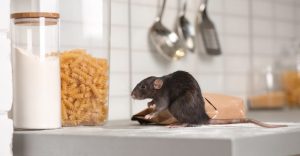
Introduction
Dealing with pests can be a frustrating and challenging task for homeowners. Whether it’s insects, rodents, or other unwelcome critters, pests can cause damage to property, spread diseases, and create an uncomfortable living environment. In this comprehensive guide, we will explore effective strategies and preventive measures to help you achieve a pest-free home and maintain peace of mind. Pest control whittlesea provides effective and reliable pest control services tailored to meet the needs of the Whittlesea community.

Understanding Common Household Pests
Before diving into pest control strategies, it’s important to familiarize ourselves with some of the most common household pests:
- Ants: Ants are social insects that invade homes in search of food and water. They leave trails and can quickly become a nuisance.
- Cockroaches: Cockroaches are nocturnal insects that thrive in warm and humid environments. They are known for spreading diseases and triggering allergies.
- Rodents: Mice and rats are common household rodents that can cause extensive damage by gnawing on structures, contaminating food, and spreading diseases.
- Termites: Termites are silent destroyers, feeding on wood and causing significant damage to the structure of your home. They often go unnoticed until the infestation is severe.
- Bedbugs: Bedbugs are small, reddish-brown insects that feed on the blood of humans and animals. They infest beds, furniture, and upholstery, causing itchy bites.
Prevention: The First Line of Defense
The best way to control pests is to prevent their entry into your home in the first place. Here are some preventive measures you can take:
1. Seal Entry Points:
Inspect your home for any gaps, cracks, or openings that pests can use to enter. Seal them with caulk, weatherstripping, or other appropriate materials.
2. Maintain Cleanliness:
Keep your home clean and free from clutter. Regularly sweep, vacuum, and mop floors, and promptly clean up spills and food debris. Pay special attention to the kitchen and dining areas.
3. Proper Food Storage:
Store food in airtight containers to prevent attracting pests. Keep pantry items organized and regularly check for signs of infestation, such as chewed packaging or droppings.
4. Eliminate Standing Water:
Pests thrive in moist environments. Fix any leaky pipes or faucets and ensure proper drainage around your home. Avoid leaving standing water in dishes or flower pots.
5. Maintain Outdoor Areas:
Trim trees and shrubs away from your home’s exterior to prevent easy access for pests. Keep outdoor trash cans tightly covered, and remove debris and leaf litter from your yard.
Identification and Targeted Treatments
If despite preventive measures you still encounter pests, it’s essential to identify the specific pest and apply targeted treatments. Here are some strategies for common household pests:
1. Ant Control:
Identify the ant species and their entry points. Use ant baits or non-repellent insecticides to eliminate the entire colony. Keep surfaces clean to remove pheromone trails that attract ants.
2. Cockroach Control:
Apply gel baits or insecticide sprays in areas where cockroaches hide, such as cracks, crevices, and behind appliances. Keep food areas clean and eliminate potential water sources.
3. Rodent Control:
Set up traps or use bait stations to catch and eliminate rodents. Seal off access points, such as gaps in walls or foundations. Remove potential food sources by storing food properly and securing garbage bins.
4. Termite Control:
Consult a professional pest control service for effective termite treatments. They may use liquid termiticides, termite baits, or other targeted methods to eliminate the infestation and protect your home.
5. Bedbug Control:
Thoroughly inspect bedding, furniture, and cracks in walls for signs of bedbugs. Wash infested bedding in hot water and use a vacuum to remove bugs and eggs. Consult a professional if the infestation persists.
Seeking Professional Assistance
In some cases, professional pest control services may be necessary to tackle severe infestations or ensure long-term prevention. Professional exterminators have the expertise and tools to assess the situation accurately and apply appropriate treatments. They can also provide advice on ongoing prevention and maintenance.
Conclusion
A pest-free home is essential for a comfortable and healthy living environment. By implementing preventive measures, promptly addressing any signs of infestation, and seeking professional assistance when needed, you can effectively control and manage pests in your home.
Remember, the key is consistency and vigilance. Regularly inspect your property, maintain cleanliness, and be proactive in identifying and addressing pest issues. With the strategies outlined in this guide, you can achieve a pest-free home and enjoy peace of mind knowing that your living space is protected.






